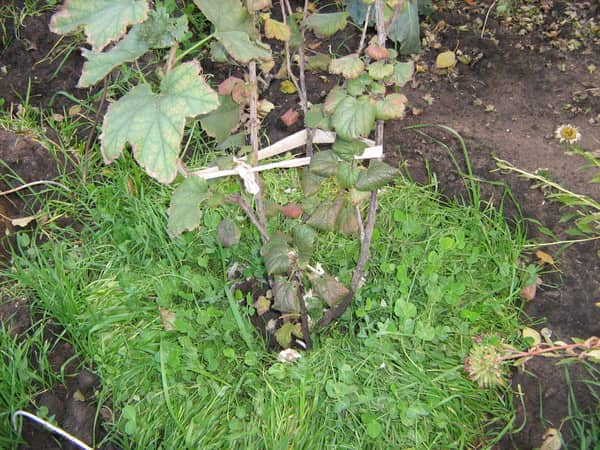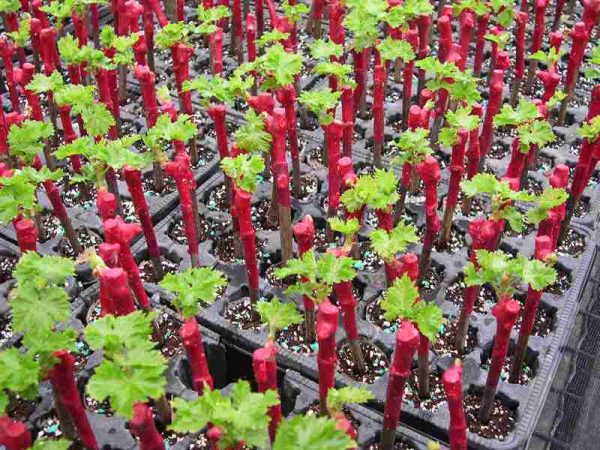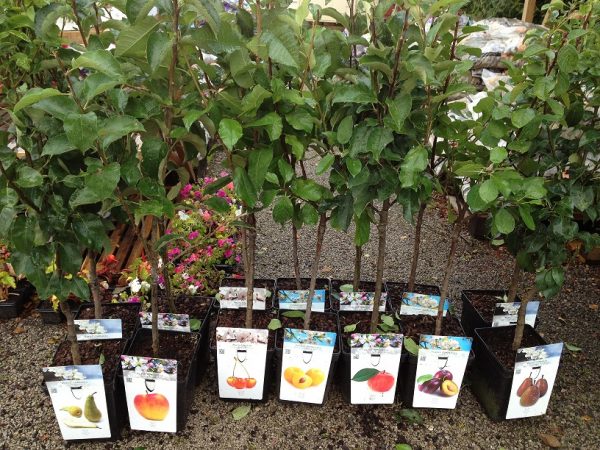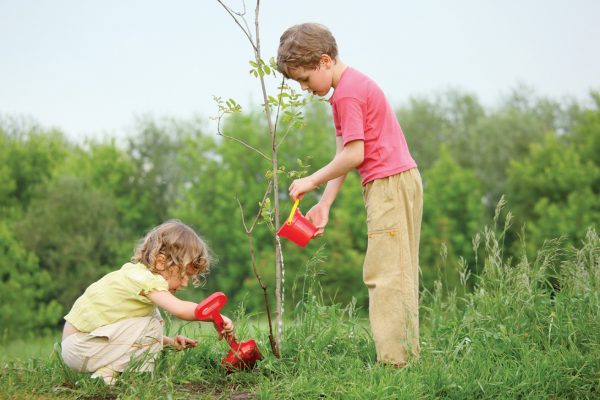How to feed plant seedlings?
Content
What seedlings are missing
If the filling of the soil was carried out correctly, then in the first year after planting the plants do not need any additional fertilizing. Correct filling of the soil involves the introduction of organic or complex fertilizers, which in sufficient quantities contain all the necessary nutrients. Most of all, the planted plants need nitrogen, potassium and phosphorus - these substances must be added additionally, since the soil initially contains few of them. Carbon, oxygen and hydrogen are no less important for planted trees - these components are absorbed by the plant from the soil, but on poor soils, they may be lacking. At the initial stage of growth, relatively little plants require calcium, magnesium, sulfur, iron, manganese, copper and other elements.
The need for fertilizer also depends on the type of fruit crops. For example, seedlings of apple, quince and pear trees consume more nutrients, and preferably of organic origin. Stone fruits (plum, cherry, apricot) are less picky - they can be fed with both organic and mineral mixtures. And at the same time, the lack of any element will not significantly affect their development.
Unfortunately, it often happens that after planting, plants cannot take root for a long time, begin to hurt, and may even die. It is possible to determine which element is missing for the harmonious development of young trees by the following external features:
- a lack of nitrogen is indicated by the pale coloration of the greenery, weak stems and small leaves;
- the lack of potassium can be determined by the spotty, yellow or brown color of the foliage, the leaf plates become wrinkled, dry out along the edge;
- with a lack of magnesium, the formation of chlorophyll is disrupted, the leaves become light, and then turn yellow and die off (fall off);
- the lack of phosphorus is indicated by small, dark, almost black, drying leaves, the problem most often begins to develop from the lower part of the plant;
- iron deficiency manifests itself in the drying of the edges of leaves and shoots, seedlings of apple trees, pears, plums, raspberries and grapes are very sensitive to iron deficiency;
- the lack of copper is indicated by the whitened tips of the leaves, the greens lose their elasticity and then die off.
Video "Good Fertilization Tips"
An informative video providing useful tips for fertilizing young plants.
Nitrogen fertilizers
The need for seedlings in nitrogen occurs 2-3 years after planting, provided that this element is sufficiently introduced when planting the plant.Nitrogen is mostly introduced in spring, when the vegetation process is especially active, and in a small amount in late autumn. Spring feeding is carried out at the rate of 20 g / m2. sq. near the trunk circle, for fertile soils, an introduction of 10 g / m is sufficient. sq. You can fertilize the soil with nitrogen using the following means:
- manure, compost, bird droppings contain from 0.5 to 3% nitrogen, so they can be used as fertilizer on soils of medium fertility, or as an addition to mineral mixtures;
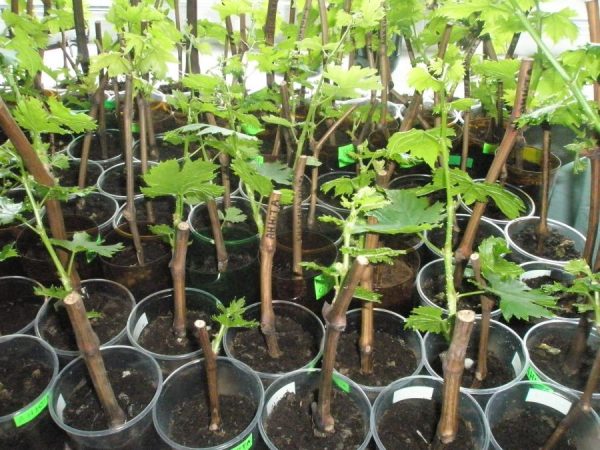
- ammonium nitrate is a granular fertilizer containing up to 35% pure ammonium nitrate and up to 14% sulfur, thanks to which the mixture is well absorbed by plants. You can feed the plants with nitrate both in dry and in liquid form: when the granules are embedded in the soil around the trunks, the rate is 15-20 g / 1 sq. m, to prepare an aqueous solution, you need 20-30 g / 10 l of water;
- urea (carbamide) - a mineral fertilizer containing nitrogen in an easily assimilable form - plants in the second year after planting can be fertilized with a dry mixture by embedding in the trunk circle, also planted trees can be fed with a liquid solution at the rate of 0.5 kg of carbamide / 10 l of water (solution the crown and trunk are sprayed).
Weak and not strengthened after planting seedlings at the end of the growing process and in the fall are not recommended to fertilize with nitrogen preparations - this will prolong the period of their growth and reduce frost resistance.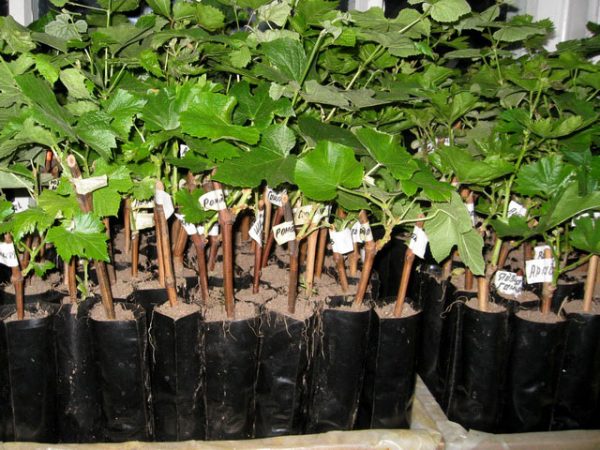
Phosphorus-potassium mixture
Potash and phosphorus fertilizers are recommended to be applied in the fourth year after tree planting. Potash, phosphorus and complex mixtures containing these elements are introduced mainly in the fall, as they contain substances that are difficult for plants to digest. Fertilization with phosphorus and potassium in the spring should only be fruitful crops. If by the fourth year the tree begins to bear fruit, then it must be fed during the formation of the fruit ovary. Potassium fertilization can be carried out by applying the following fertilizer:
- potassium salt - contains 40% potassium, is a universal fertilizer for all crops, applied to the soil in autumn;
- potassium sulfate - contains 50% of the main substance, is used as the main fertilizer for fruit crops, due to the absence of chlorine, the drug can be applied in spring.
Phosphate feeding can be carried out using the following mixtures:
- superphosphate - granular fertilizer contains up to 20% phosphoric acid, as the main food, the mixture should be fertilized at the rate of 30-40 g / m. sq.,
- phosphorite flour - depending on the type, contains from 15 to 35% phosphorus, any fruit crops can be fertilized with the agent by embedding in loose soil, has a neutralizing property on acidic soils.
You can also fertilize fruit crops with complex preparations: nitrophos (contains potassium 12%, phosphorus and nitrogen), diammophos (potassium and phosphorus 26%, nitrogen - 10%), special mixtures "Autumn", "AVA", which, in addition to potassium and phosphorus, contain some trace elements.
Organic products
The universal and most valuable fertilizer for seedlings of fruit crops is animal and bird manure. It is introduced into the soil in the third year after planting at the rate of 5-6 kg / m. sq. periosteal circle. The most useful is poultry, especially chicken droppings. It is applied as a fertilizer to the soil in the spring. To feed the fruit crops, the droppings should be diluted with water in a ratio of 1 kg / 10 l of water, then insist for several days. It is recommended to apply dry droppings in autumn at the rate of 0.3 kg / m. sq.
Fresh manure from cows, horses, pigs is not recommended. To fertilize seedlings, only humus (rotted manure) should be used. Feeding with manure is carried out in the fall no more than 1 time / 2-3 years; on poor soils, you can feed the plants more often.
Peat as a fertilizer is not as effective as manure, but applied for digging, it improves the structure of the soil, increases air permeability.Furnace ash contains phosphorus, potassium and lime. It lowers the acidity of the soil, so it is recommended to fertilize podzolic and soddy soils with ash. Ash is brought in at the rate of 100-120 g / sq. m. It can be mixed with any other organic fertilizing, or prepare an aqueous solution for root application.
Fertilizing with compost
Compost is considered a very valuable organic fertilizer. It enriches the soil with humus, improves aeration, contributing to an increase in soil fertility. In addition, compost contains a large amount of trace elements and nutrients necessary for the growth of young trees. Using high-quality compost for feeding the garden, you can completely do without the use of mineral preparations and mixtures.
Most gardeners prefer to fertilize seedlings of fruit trees exclusively with their own compost. Everyone knows that when planting seedlings, the soil should be well fed so that the plants do not experience a lack of nutrients at the start of their development. Therefore, experienced gardeners prepare for planting young stock in advance. Since autumn, they dig holes into which they pour various organic waste intended for compost: dry leaves, peat, sawdust, dry tops and other materials. Then sprinkle the holes with a little earth, cover, and leave until spring. During the winter, the waste will turn into compost, which will serve as a good organic food for the planted trees during the first year of life.
In the future, it is recommended to make compost for crops in the third year after planting, but if there is a lack of humus in the soil, it may be necessary to add it in the second year. It is necessary to apply compost for seedlings in the fall (from mid-September to early October) - at this time it is still warm, therefore, some of the nutrients will be absorbed by crops in the fall, which will help them adapt and survive the winter. Fertilizer should be dug shallowly into the topsoil of the near-stem circles. Alternatively, you can simply spread it around the trunk and sprinkle it with a little earth.
Video "How to properly care for seedlings"
Informative video on how to care for young grapes. These tips can be used for most other fruit plants as well.


